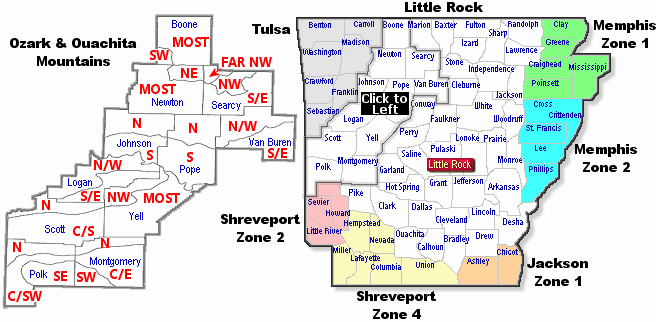 |
| Product Notice |
| If a product is not current or unavailable, try clicking the LATEST button. |
|
|
 |
Operating Plan |
 |
| |
|
Do you wish to get more familiar with fire weather, and find out how the National Weather Service prepares to meet the needs of the fire weather community? Then you will want to check out the latest Arkansas Fire Weather Operating Plan (updated February, 2025). To obtain this document (file size is around 1.4 MB), click here.
|
| Note: The document is in PDF format. If you don't have a PDF reader, you can get one free by clicking here. |
|
| |
 |
Spot Forecast |
 |
| |
|
|
| Safety and the health of others should be considered before burning. It is generally not safe to burn when it is breezy (winds over 15 mph) and dry (humidity less than 20 percent). So that nearby towns do not get smoked out, proper ventilation is crucial. The goal is for smoke to get up and out. Ventilation increases as inversions (rising temperature with height) weaken and winds aloft (transport winds) ramp up to carry smoke away. Higher ventilation rates lead to optimal Category Day (a scale from 1 to 5) classifications. Given a Category Day of "1", smoke transport is poor, and "5" is excellent. |
| |
| Category Day Information |
| Use the dropdown menu below to get the latest "Category Day" for the county of your choice. For help locating parts of counties in the list, click here. |
| |
|
|
|
| |
|
While Category Day is a valuable predictor of fire behavior, other variables such as the Dispersion Index (a scale from 1 to 100+) should be considered. This index estimates the ability of the atmosphere to dilute smoke. Daytime values below "40" (and especially under "20") are not ideal (smoke dispersal is fair to poor), and burning is generally not recommended.
|
 |
Forestry Forecast Information |
 |
| |
|
Forestry Forecast (for the Little Rock County Warning Area only) (for the Little Rock County Warning Area only)
|
Fire Weather Point Forecast (trends of temperature, humidity, winds, etc) (trends of temperature, humidity, winds, etc) |
|
|
| |
| Try Our Clickable Maps! |
|
Click on the maps below to get a forestry forecast from the indicated office. For a closer look at office areas of responsibility, click here. Please Note: In the map below left, abbreviations are as follows..."N" is north, "S" is south, "E" is east, "W" is west, "NW" is northwest, "NE" is northeast, "SW" is southwest, "SE" is southeast, "C" is central, and "MOST" is most of the county. For more about the map, click here.
<<<< Click Here For a Regional Forecast >>>>
<<<< Click Here For Specific National Forest Forecasts >>>>

|
|
|
|
Latest Red Flag Warning/Fire Weather Watch |
Latest Fire Danger Statement |
| |
 |
Fire Danger Assessment |
 |
|